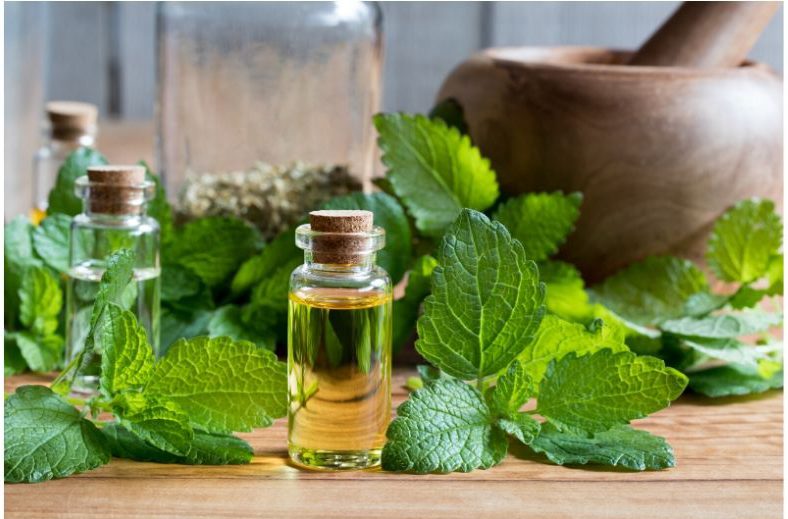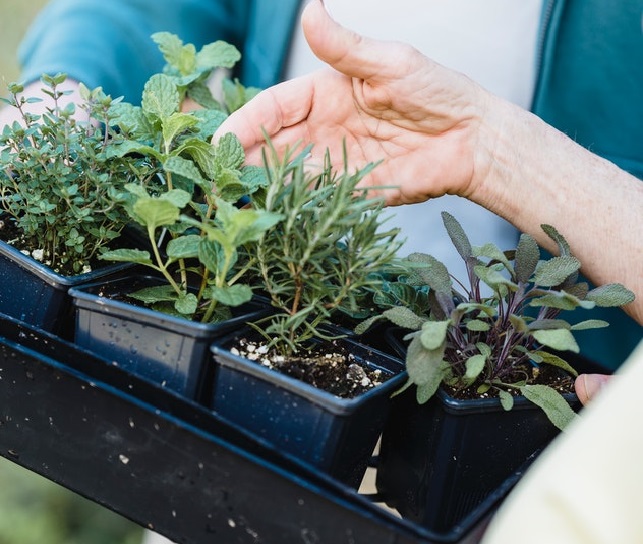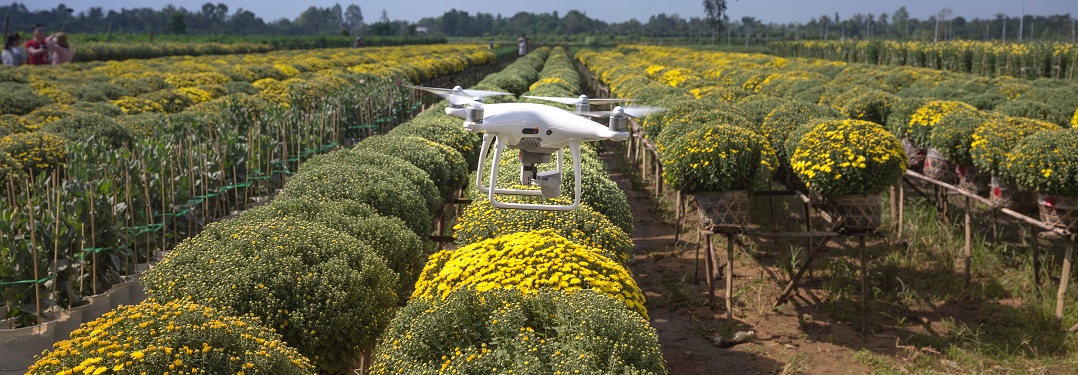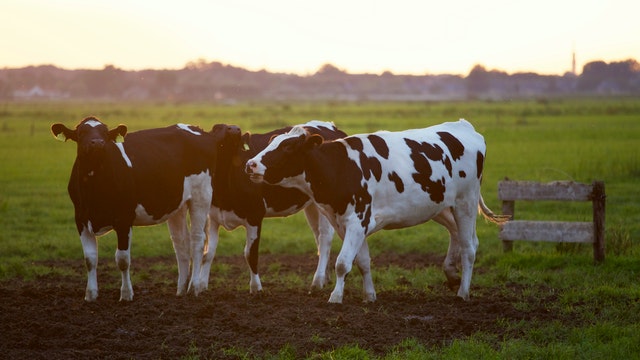Are you searching for types of herbs to grown in Kenya? This post outlines the 12 most profitable herbs in Kenya. It gives you each herbs features, uses and nutritional uses. The medicinal, culinary or health-related benefits are also outlined. Apart from growing them for sale in local spice markets, consider then to your food and drinks to spice your home diets.
There is a growing demand for herbs and spices in domestic and export markets. In the local market, they fetch higher profits for the farmers than conventional vegetables, grains and pulses. This makes it attractive to you if you run a small farm in peri-urban, urban or rural areas.
To grow them efficiently and profitably, invest in proper farm structures like greenhouses, cold rooms and chemical stores. Look for food safety certification and install hand washing units and foot baths on your farm for safety against diseases like COVID-19.
Rosemary

Also known as “Dew of the sea of the Old Man.” Rosemary is an evergreen herb from the Mediterranean region. It has a pine-like aroma with a sweet, bitter fresh flavour. Its leaves are silvery with a needle-like structure. Its flowers are pink, purple, white or blue.
Read Next: Is Herbal Farming in Kenya Really Profitable in 2025
Rosemary and its products are common in retail stores. It has a wide variety of uses in making salads, soups, sauces, stews, tea and meat roasting delicacies. You can use it as fresh leaves, essential oils, liquid extracts or grounded powder. The herb is rich in antioxidants that boost the immune system and improve blood circulation. It enhances memory, alertness and concentration. Rosemary has iron, potassium and Vitamins A and C.
Mint

You can grow the mint her for its antioxidants, culinary and medicinal benefits. You can use the herb while it is fresh or dry. It’s a common spice in culinary dishes and aromatherapy. Mint oil, one of its major product is an additive in chewing gums, toothpaste, candies and beauty products.
Read Next: Is Mint Farming Really Profitable in Kenya in 2024?
Besides growing it for sale, You can use mint at home for the following health benefits; Rosmarinic acid is rich in antioxidants and anti-inflammatory characteristics. It is a natural treatment for allergic symptoms on skin affected by rash and insect bites. Menthol is a nice aromatic natural decongestant with a cooling effect. Use it to treat the common cold and curing sore throat. It offers a fresh breath, hence its use in oral health. Besides, mint contains Vitamins A and C, iron, calcium and proteins.
Chia

Chia is grown for its leaves and seeds. It is an annual herb belonging to the Salvia family of plants. It grows 1 to -1.5 meters high and produces blue flowers that spike up to 10 cm long. It produces pin sizes, brown shiny seeds. Given its medicinal, adaptability and nutritional benefits, it has become a key commercial crop grown globally beyond South America.
Fresh or dried chia leaves are used to prepare tonic herbal tea. Sweeten the tea with honey and lemon juice for taste. Chia leaves tea is a blood cleanser and can treat fevers, respiratory problems, mouth ulcers, diabetes and diarrhoea. You can also gargle it to treat sore throat.
Use the chia seeds in your drinks such as water, yoghurt, or smoothies. Besides, you can sprinkle them in cereals, eat direct, cook or add them to baked goods like bread and oatmeal. They have a gelatinous texture when mixed with water making them an ideal egg replacer in vegan baking. Chia seeds are a good source of omega-3 fatty acids, fibre, antioxidants, iron, calcium and phosphorus.
Chives

Chives herbs belong to the onion genus. They are bulbous plants with long hollow edible stems. Use sliced chive stems in a range of uses including soups, sauces, salads, potato dishes, Mexican cuisine among other dishes. You can dry and grind Un-bloomed flower buds to make the chive spice powder.
Chives have many benefits to human health as they help in sleep, muscle movement and curbing depression. Chives are rich in magnesium, phosphorus, potassium and Vitamins A and C.
Thyme
Thyme herb is native to the Mediterranean region, thyme is a perennial herb that sprouts into many small branches. It produces pink flowers. Use thyme as a food flavour or a medicinal herb.
Use thyme as a cough remedy. Thyme contains thymol which is an active anti-fungal compound. It is also rich in lutein, Zeaxanthin and thymonin antioxidants which are natural health and immune boosters. Besides, thyme is a natural deodorant. It is rich in calcium and Vitamin C, A and B6. Thyme contains high concentrates of carotenoids crucial in vision health.
Sage
Sage herbs’ scientific name “Salvia officinalis” is derived from a Latin name that means “to save”. The herb belongs to the mint family and closely related to the rosemary herb. It’s a perennial plant that grows up to 2 feet high. It has small green-grey veined leaves. Commonly used as fresh leaves, grounded powder or rubbed. Fresh leaves are the most preferred since they are highly flavoured and fragrant for the best recipes. Cook chopped leaves with cheese mushrooms and making herbal teas and cooking eggs.
Use Sage in boosting cognitive function and managing blood sugar, weight and diarrhoea. Its antiseptic and antibacterial qualities make it widely used in promoting oral health. Given its anti-inflammatory qualities, sage is widely used in skincare as well. you can also use Sage in easing menopause symptoms. Sage is rich in fibre, vitamins A, B, C, E and K. It also has calcium, iron, magnesium, manganese, thiamine, and copper.
French Tarragon
The French Tarragon is a perennial herb that belong to the sunflowers family. Also known as the king of herbs among the French. It is native to Central Asia; it appears as fresh green grass in colour with silver frosting. It’s highly aromatic, making it an ideal ornamental plant. Its leaves, the only edible part of the plant, has a sweet, light, and liquorice-like taste that leaves one’s tip of the tongue a little numb.
Commonly marketed as fresh sprigs or in dried form in grocery stores. French use it in cooking various dishes including eggs, chicken, and fish dishes. It also widely used in condiments, sauces and butter seasoning. Can also be used in making tarragon tea. Tarragon is rich in methyl eugenol and estragole making it an effective antiseptic in numbing toothaches and applied in oral health. The king of herbs is also rich in Vitamin C, A and B-complex.
Mellisa

Commonly known as lemon balm and is a perennial herb from the mint family. It is widely used in foods, beverages and as an extracted oil. Mellisa is consumed as a tea, supplements or extract. You can also apply it to the skin in balms and lotion.
use it in treating stomach upset and vomiting given its digestive features. It’s also a sedative, antioxidant antimicrobial and diuretic making it good in managing menstrual cramps, toothaches, sores and insect bites. Its leaves have other properties like carminative, tonic, analgesic and antispasmodic.
Dill

The plant is a member of the parsley family and it grows into long slender stems that divide into very thin delicate feathery green leaves. Its edible parts are fresh leaves that as fresh herbs, or dried form. You can also buy dill as dried leaves commonly referred to as “dill weed “or seeds.
The culinary spice is widely used in food seasoning and green salads. Industrially, it is a fragrance ingredient in soaps and cosmetics. Interestingly, it was used in the middle ages to fend off witchcraft.
It is a source of proteins, carbohydrates, phosphorus, iron, magnesium, sodium and potassium. It is used to ease the passage of bowel movements and relieve constipation.
Parsley
Parsley is native to the Mediterranean region. Today, the culinary herb cultivars are widely grown and marketed as herb or dried herb because of their digestion and detoxification health and nutrition value. Use the fresh leaves in salads and dressings. Sprinkle the dried parsley spice is in soup and pasta.
As a raw material, parsley seed is used to extract oil used in fragrance in soaps, cosmetics, and perfumes. You can also use the herb in treating dark patches on the face, cracked or chapped skin, bruises, insect bites, and stimulating hair growth. Parsley is rich in various antioxidants like beta carotene compound that protects eye health, the plant is highly rich in Vitamins A, B, C and K.
Basil

Basil herb is native in the tropical regions of central Africa and Southeast Asia. It is an annual herb that grows to around 20 inches in maturity. Its leaves are highly aromatic, oval and grow to 4 inches. It has tough square stems and has white flowers that produce small black seeds.
Use its freshly chopped leaves or crumbled dried leaves in sauce and Italian recipes. Its flavour dissipates with strong heating hence it is best added before serving. Basil Leaves are rich in anti-oxidants and has many medicinal properties.
Apart from growing basil for profits, its flowers attract a lot of bees, which help in the pollination of other farm crops. You can grow the plant on vegetable plot edges as a biological pest control plant given its insect repellent. It contains iron, calcium, manganese, magnesium, potassium and Vitamins A, C and K.
Conclusion
This post has presented 12 exotic herbs and spices you can grow for domestic use or sale in local and export markets. The plants represented include moringa, mint, thyme, basil, parsley, dill, Mellisa and French tarragon among others. The post has looked at plant features, uses health and nutrition values.
Did you Like the Post? Let us know below
Agcenture.com is your best agriculture, food & health blog.
Thank you for following us on Facebook, Twitter (X), LinkedIn, YouTube, and WhatsApp @ Agcenture for the latest updates.




THIS IS GREAT IN AGRIBUSSINESS IN KENYA